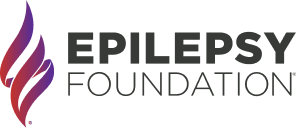Causes of Epilepsy in Childhood
Seizures in children have many causes. Common causes of childhood seizures or epilepsy include
- fever (these are called febrile seizures)
- genetic causes
- head injury
- infections of the brain and its coverings
- lack of oxygen to the brain
- hydrocephalus (excess water in the brain cavities)
- disorders of brain development
Most seizures in childhood are not associated with a definite cause, however.
Less common causes of childhood epilepsy include brain tumors or cysts and degenerative disorders (progressive and deteriorating conditions, often associated with loss of brain cells). There is an important difference between something that causes seizures, such as a high fever in a young child, and something that causes epilepsy, such as a severe head injury.
Extensive and careful studies have not found any evidence that immunizations cause epilepsy. However, a seizure may occur within 1 or 2 days of an immunization, especially if it is followed by a fever. In such cases, the child probably had an innocent febrile seizure. When the child receives immunizations, the parents should give acetaminophen (Tylenol) or ibuprofen (Advil, Motrin) before a fever develops. Children who have a single seizure following an immunization can usually receive further immunizations.
Many childhood seizures are benign, meaning that they are brief events that will not continue into adulthood, and the child's development and intellect are usually normal. Other seizures are serious and often are associated with developmental delay or intellectual disability and persistent seizures.
The outlook for seizures only partially depends on their cause. For example, two children may be infected with the same bacteria and both have meningitis, an infection of the membranes covering the brain and spinal cord. One child is left with severe epilepsy, but the other child never has a seizure. How can the different outcomes be explained? The bacterial infection in one child may have been more widespread, involving sensitive areas of the brain. Or the bacteria could have infected a vein in one child and caused a small stroke, which then caused the epilepsy. Or perhaps one child had a genetic (hereditary) tendency to have seizures, and the infection brought this trait to the surface.
All people are capable of having a seizure. It remains uncertain why some children have seizures after incidents such as head injury while most others do not. "Seizure threshold" refers to the conditions necessary for the production of a seizure. In animals, the seizure threshold can be precisely defined by observing their response to certain chemicals or electrical stimulation. In human beings, the term "seizure threshold" is used in a more abstract sense. In persons who have a tendency to have seizures, the threshold is lower than in people who have a greater resistance, or higher threshold, against seizures. Genetic, hormonal, sleep deprivation, and other factors can influence an individual's seizure threshold.
Resources
Epilepsy Centers
Epilepsy centers provide you with a team of specialists to help you diagnose your epilepsy and explore treatment options.
Epilepsy Medication
Find in-depth information on anti-seizure medications so you know what to ask your doctor.
Epilepsy and Seizures 24/7 Helpline
Call our Epilepsy and Seizures 24/7 Helpline and talk with an epilepsy information specialist or submit a question online.
Tools & Resources
Get information, tips, and more to help you manage your epilepsy.


